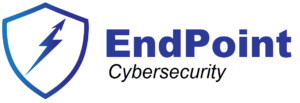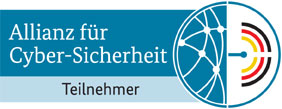Detailed Briefing Document: NIS2 Fulfillment Through TISAX
Date: October 26, 2023 Prepared for: Key Stakeholders concerned with NIS2 Compliance in the Automotive Industry Subject: Review of the “NIS2 fulfilment through TISAX” Expert Opinion, detailing how TISAX assessments align with NIS2 Directive requirements.
Executive Summary
The automotive industry, through the ENX Association and the ISA requirements catalogue, has proactively addressed cybersecurity for years, culminating in the TISAX assessment standard established in 2017. This expert opinion, published by the ENX Association, concludes that companies with TISAX-compliant sites fully implement the requirements of the NIS2 Directive. The ISA catalogue and TISAX assessments go beyond NIS2 requirements, defining and continuously upholding the “state of the art” in information and cybersecurity for the industry. Independent auditors confirm implementation in a three-year cycle, deemed appropriate even when compared to the two-year cycle for critical infrastructure operators under German law. A common exchange mechanism allows organizations to query TISAX status and, by extension, NIS2 compliance, of partners.
Key Takeaway: Organizations with a valid TISAX label are generally well-prepared for the material requirements of NIS2, with the caveat that they must still manage national reporting requirements in parallel and ensure that their TISAX assessment objectives reflect their overall risk and cover all NIS2-affected sites.
1. Introduction and Overview of NIS2 and TISAX
The NIS2 Directive (EU) 2022/2555 aims to strengthen cyber resilience across the European Union, replacing the NIS1 Directive. It expands the scope of affected organizations, including many in the automotive industry. The automotive industry recognized the need for industry-wide information and cybersecurity and developed the TISAX Assessment standard and its underlying ISA requirements catalogue. The purpose of this analysis is to demonstrate that TISAX assessments, based on ISA6, can be considered proof of compliance with NIS2 requirements.
- Purpose of Analysis: To assist companies in the automotive industry in assessing whether TISAX compliance covers NIS2 requirements.
- Scope of Analysis: Focuses exclusively on NIS2 Directive requirements with specific implementation guidelines for companies. It does not provide implementation assistance or confirm a company’s readiness for NIS2 outside of TISAX. Country-specific implementations and additional material requirements are not covered.
- Target Audience: Experts from companies affected by NIS2 that use or undergo TISAX assessments, and authorities responsible for NIS2 compliance and supervision.
2. TISAX Assessment and Underlying Catalogue of Requirements (ISA6)
TISAX assessments, conducted by independent auditors in a three-year cycle, are based on ISA catalogue version 6 (ISA6). A critical distinction is made between TISAX scope definition and ISO management system certifications:
- TISAX Assessment Scope: Utilizes a generally defined standard scope, ensuring comparability and a similar level of security across companies. This contrasts with ISO/IEC 27001, where the audited organization defines its ISMS scope. For the conclusions of this document to apply, TISAX Assessment objectives must reflect the company’s overall risk, and all NIS2-affected sites must have corresponding TISAX labels.
- TISAX Assessment Objectives: Allow for scaling the assessment content based on risk and criticality of information processed (e.g., Confidential, Strictly Confidential, High Availability, Very High Availability, Data, Special Data, Prototype Protection).
- TISAX Assessment Levels (AL):AL 1: Self-assessment, auditor checks completion, low confidence, not used in TISAX.
- AL 2: Auditor performs plausibility check of self-assessment, checks evidence, conducts interviews (usually web conference).
- AL 3: Comprehensive review, auditor verifies documents, conducts planned and unplanned interviews, observes implementation, and considers local conditions. Generally takes place on-site at all locations.
- If multiple objectives are used, the highest AL is applied to the overall assessment.
- TISAX Group Assessments (Simplified Group Assessment – SGA): Designed for companies with many locations and a centralized, highly developed ISMS.
- S-SGA (Sample-based): Main site extensively assessed, sample sites assessed, other sites assessed at one AL lower.
- R-SGA (Rotating Schedule-based): Main site extensively assessed, other locations assessed at the same AL but distributed over the three-year validity period. Not available for prototype protection objectives.
- TISAX Control Questions and Requirements:Requirements are categorized (Must, Should, Additional requirements for high protection needs, Additional requirements for very high protection needs, Additional requirements for SGA).
- “Must” requirements are strict, “Should” allows for justified deviations.
- Additional requirements are subdivided by protection objectives (Confidentiality (C), Integrity (I), Availability (A)).
- Individual control questions cannot be excluded as “not applicable”; they must be implemented holistically.
- Deviations in TISAX Model: TISAX includes a maturity model (six levels, target is “established”) to assess practical implementation. Identified deviations require corrective action plans with defined implementation periods (up to 3, 6, or 9 months). Failure to correct deviations results in a failed audit.
- Validity Period: TISAX assessments are valid for three years. Companies must continuously implement specified measures, conduct regular internal audits, and report significant changes affecting the ISMS or physical conditions, potentially requiring interim assessments.
3. NIS2 Article 20: Governance and Training
NIS2 Article 20 focuses on the governance body’s responsibility for cybersecurity risk management and their participation in relevant training.
- NIS2 Article 20 (1): Governing Body’s Role in Risk Management: Requires the governing body to establish and monitor structures for cybersecurity risk management.
- TISAX Fulfilment: Fully covered by ISA6 controls (1.2.1, 1.2.2, 1.4.1, 1.5.1, 1.5.2, 7.1.1). These controls check for defined ISMS scope, determined requirements, management commissioning and approval of ISMS, communication channels, regular reviews of ISMS effectiveness, defined responsibilities, resource availability, adequate security structure, qualified employees, conflict of interest avoidance, regular risk assessments, risk classification and allocation, security risk handling, compliance verification, independent ISMS reviews, and consideration of regulatory/contractual provisions.
- Summary: “The requirement that the governing body of an organization has created appropriate structures to implement and monitor the implementation of the cybersecurity risk management measures taken to comply with Article 21 (NIS2 Article 20 (1)) is described by the controls defined in the ISA6 assessment standard and is fully checked for existence and implementation by the responsible auditor within a TISAX assessment.” The three-year TISAX cycle is considered appropriate given NIS2’s risk-based approach.
- NIS2 Article 20 (2): Training for Governing Body and Relevant Members: Requires regular training for governing body members and other relevant individuals to acquire sufficient knowledge and skills in cybersecurity risk identification, assessment, and management.
- TISAX Fulfilment: Checked by ISA6 control 2.1.3 (“To what extent is staff made aware of and trained with respect to the risks arising from the handling of information?”). This includes comprehensive training for all employees (including management), an awareness training concept covering relevant areas, consideration of target groups, regular execution, and documentation of participation.
- Summary: While ISA does not explicitly list “management body” for training, it mandates training for “all employees” and differentiation by “target group,” implicitly covering management. This ensures the requirements of NIS2 Article 20 (2) are met.
4. NIS2 Article 21: Risk Management Measures
NIS2 Article 21 mandates appropriate and proportionate technical, operational, and organizational measures to manage risks to network and information systems.
- NIS2 Article 21 (1): General Measures for Risk Management: Requires appropriate and proportionate measures to manage risks and minimize incident impact, considering the state of the art and implementation costs.
- TISAX Fulfilment: Covered by ISA6 controls 1.2.1 (“To what extent is information security managed within the organization?”) and 1.4.1 (“To what extent are information security risks managed?”). These check for defined ISMS scope, determined requirements, existence and regular updating of risk assessments, assignment of risk owners, and action plans for risks.
- Summary: “The requirements of NIS2 Article 21 (1) are described by the controls defined in the ISA6 assessment standard and are checked for existence and implementation by the auditor responsible during a TISAX assessment.” The TISAX assessment ensures a risk-based approach tailored to the company’s circumstances.
- NIS2 Article 21 (2) a) – j): Specific Measures: These sub-articles detail specific areas for cybersecurity measures.
- a) Policies on Risk Analysis and Information System Security: Fully covered by ISA6 controls 1.4.1, 5.2.7, 5.3.1, checking for procedures to identify, assess, and address risks, network management requirements, and information security consideration in new/developed IT systems.
- b) Incident Handling: Fully covered by ISA6 controls 1.6.1, 1.6.2, checking for definition of reportable events, reporting channels, communication strategies, and incident processing procedures (categorization, qualification, prioritization, response, escalation). “The processes for detection, reporting channels and procedures, classification, processing and escalation (if necessary), go beyond the requirements stipulated in NIS2.”
- c) Business Continuity, Backup Management, Disaster Recovery, Crisis Management: Fully covered by ISA6 controls 1.6.3, 5.2.8, 5.2.9, checking for crisis management preparedness, IT service continuity planning, and backup/recovery of data and IT services.
- d) Supply Chain Security: Fully covered by ISA6 controls 1.2.4, 1.3.3, 1.6.1, 1.6.2, 1.6.3, 5.3.3, 6.1.1, 6.1.2. This includes defining responsibilities with external IT service providers, ensuring use of evaluated services, incident reporting and management from external parties, secure removal of information from external services, ensuring information security among contractors and partners, and contractual non-disclosure agreements. “The requirements in the ISA6 assessment standard go beyond the requirements of NIS2 and additionally include, for example, compliance with information security standards beyond the direct providers or service providers.”
- e) Security in Network and Information Systems Acquisition, Development, and Maintenance (including vulnerability handling): Fully covered by ISA6 controls 1.2.3, 1.2.4, 1.3.4, 5.2.1, 5.2.4, 5.2.5, 5.2.6, 5.3.1, 5.3.2, 5.3.3, 5.3.4. This extensive coverage includes considering information security in projects, responsibilities with external IT service providers, approved software usage, change management, event logging, vulnerability identification and addressing, technical checks of IT systems, security in new/developed IT systems, network service requirements, and information protection in shared external services. “The assessment goes beyond the requirements of NIS2 by considering the return and secure removal of information assets from IT services outside the organization.”
- f) Policies and Procedures to Assess Effectiveness of Cybersecurity Risk-Management Measures: Fully covered by ISA6 controls 1.2.1, 1.4.1, 1.5.1, 1.5.2, 1.6.2, 5.2.6, checking for regular review of ISMS effectiveness by management, up-to-date risk assessments, regular compliance checks, independent ISMS reviews, continuous improvement based on security events, and regular technical audits of IT systems and services. The three-year cycle is considered appropriate.
- g) Basic Cyber Hygiene Practices and Cybersecurity Training: Covered by a wide range of ISA6 controls (1.1.1, 2.1.2, 2.1.3, 4.1.3, 4.2.1, 5.1.1, 5.1.2, 5.2.1, 5.2.2, 5.2.3, 5.2.4, 5.2.5, 5.2.6, 5.2.7, 5.2.8, 5.2.9, 5.3.1, 5.3.2, 5.3.3, 5.3.4). This includes information security policies, contractual obligations for staff, comprehensive training, secure management of user accounts/login info, access rights management, cryptographic procedures, information protection during transfer, change management, separation of environments, malware protection, event logging, vulnerability management, technical audits, network management, continuity planning, backup/recovery, and secure handling of information assets.
- h) Policies and Procedures Regarding Cryptography and Encryption: Fully covered by ISA6 controls 5.1.1, 5.1.2, checking for adherence to industry standards, technical rules, lifecycle management of cryptographic keys, key sovereignty, and protection of information during transfer (including encryption).
- i) Human Resources Security, Access Control Policies, and Asset Management: Fully covered by a comprehensive set of ISA6 controls (1.3.1, 1.3.2, 1.3.3, 2.1.1, 2.1.2, 2.1.3, 2.1.4, 3.1.3, 3.1.4, 4.1.1, 4.1.2, 4.1.3, 4.2.1, 5.2.1, 5.2.2, 5.2.3, 5.2.4, 5.2.5, 5.2.6, 5.2.7, 5.2.8, 5.2.9). This includes identification and classification of information assets, use of approved external IT services, employee qualification for sensitive roles, contractual obligations, training, mobile work regulations, handling of supporting assets, mobile device management, identification means management, user access security, user account/login info management, access rights, change management, separation of environments, malware protection, event logging, vulnerability management, technical audits, network management, continuity planning, and backup/recovery.
- j) Multi-factor Authentication, Continuous Authentication, Secured Communications, and Emergency Communication Systems: Fully covered by ISA6 controls 1.6.3, 4.1.2, 4.1.3, 5.1.2, 5.2.8. This involves crisis planning for communication, user authentication procedures (including strong authentication/MFA for privileged accounts), secure management of user accounts/login info, protection of information during transfer (secure voice/video/text communication), and continuity planning that includes alternative communication strategies.
- NIS2 Article 21 (4): Immediate Corrective Measures for Non-Compliance: Requires immediate necessary, appropriate, and proportionate corrective measures upon awareness of non-compliance with Article 21 (2) measures.
- TISAX Fulfilment: Fully covered by ISA6 controls 1.5.1, 1.5.2, checking for verification of policy observation, regular review of policies/procedures, documented results, regular compliance checks, and initiation/pursuit of corrective measures based on internal and independent reviews. The three-year cycle is deemed appropriate.
5. NIS2 Article 23: Incident Reporting
NIS2 Article 23 outlines requirements for reporting security incidents.
- NIS2 Article 23 (1): Notification of Significant Security Incidents: Essential and important entities must notify their CSIRT or competent authority without undue delay of significant security incidents. Recipients of services must also be informed immediately. Information enabling cross-border impact determination must be provided.
- TISAX Fulfilment: Almost fully met by ISA6 controls 1.6.1, 1.6.2. These check for defined reportable events, known reporting mechanisms based on severity, available reporting channels, handling of events by category, knowledge of reporting obligations and contact information, and communication strategies.
- Summary: “One exception here is the disclosure of cross-border effects, which is not explicitly required within the ISA. It has already been defined here that emergency communication must be expanded to include the specifications from NIS2. Once this extension has been considered, the requirements are fully met.”
- NIS2 Article 23 (2): Communication of Remedial Actions to Recipients: Entities must promptly communicate to affected recipients any measures or remedial actions they can take in response to a significant cyber threat, and inform them of the threat itself.
- TISAX Fulfilment: Covered by ISA6 control 1.6.2. This includes categorization, qualification, and prioritization of reported events, appropriate responses, and communication strategies considering target recipients and reporting periods.
- Summary: “The explicit contact information, reporting channels and languages must be included in the Business Continuity Management (BCM) by the companies following their publication by the EU member states. The auditor cannot guarantee that this information is available, as the information to be included is company-specific and can therefore take a variety of forms.”
- NIS2 Article 23 (3): Definition of Significant Security Incident: Provides an informative definition (serious disruption or financial/material/immaterial damage).
- TISAX Fulfilment: Purely informative, no assessable measures.
- NIS2 Article 23 (4): Reporting Timelines and Content: Specifies detailed reporting timelines (early warning within 24 hours, incident notification within 72 hours, intermediate reports, final report within one month).
- TISAX Fulfilment: Covered by ISA6 controls 1.6.1, 1.6.2, 1.6.3. These check for defined reportable events, mechanisms based on severity, accessible reporting channels, obligation to report, feedback procedures, categorization/prioritization, maximum response times, escalation, and crisis communication strategy.
- Summary: “In addition to the knowledge and existence of the necessary reporting channels and deadlines, the ISA standard also requires the establishment of crisis-proof communication. At this point, the requirements of the ISA go beyond the requirements of NIS2.” Similar to 23(2), explicit contact information and channels are company-specific and not directly assessed by TISAX.
- NIS2 Article 23 (5-11): No explicit demands on affected companies requiring preparatory measures.
6. NIS2 Article 24
- NIS2 Article 24 (1): No explicit demands on affected companies that require preparatory measures.
- TISAX Fulfilment: No assessable measures.
7. NIS2 Article 25: European and International Standards
NIS2 Article 25 addresses the application of European and international standards for network and information system security.
- TISAX Fulfilment: “The requirements of NIS2 Article 25 to use European and international standards and technical specifications for the security of network and information systems to ensure the implementation of the requirements for companies resulting from NIS2 are met by an audit of an organization’s ISMS carried out in accordance with TISAX, as this report demonstrates.” No explicit demands for preparatory measures are made on companies.
8. NIS2 Articles 22, 26-29
- NIS2 Article 22: Coordinated Risk Assessments for Critical Supply Chains: No specific requirements for companies, not considered further in this report.
- NIS2 Articles 26-28 (Jurisdiction, Register of Entities, Domain Name Registration Data): No measures to be examined for companies, not considered in this document.
- NIS2 Article 29: Exchange of Cybersecurity Information: “The requirements of NIS2 Article 29 are not assessed within the TISAX assessment.”
9. Overall Summary and Conclusion
The “NIS2 fulfilment through TISAX” document strongly asserts that TISAX assessments, based on the ISA requirements catalogue, provide comprehensive evidence that companies meet the material requirements of the NIS2 Directive.
- State of the Art: ISA and TISAX are considered “state of the art” for information and cybersecurity in the automotive industry due to their continuous development by experts, application by thousands of companies, and resulting knowledge gain.
- Management Responsibility and Risk Management: A TISAX label indicates that the management of an assessed company fulfills the responsibility required in NIS2 Article 20 and has implemented all state-of-the-art risk management measures of Article 21, provided the assessment objectives reflect overall risk and all NIS2-affected sites were included.
- Audit Cycle: The three-year TISAX audit cycle is deemed appropriate, even compared to the two-year cycle for critical infrastructure operators under German law, due to the continuous monitoring and documentation obligations within the cycle.
- Preparation for NIS2: Companies with a valid TISAX label are “well positioned to meet the requirements of the NIS2 directive in these areas.”
- Reporting Requirements: TISAX provides proof of established mechanisms for mandatory reporting to authorities and customers. However, companies are responsible for integrating country-specific additional requirements and verifying them against implemented measures.
In essence, TISAX is presented as a robust framework that aligns with and often exceeds the cybersecurity requirements set forth by NIS2 for the automotive sector.


